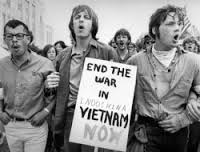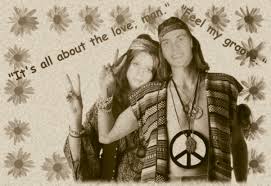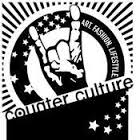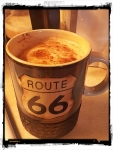Preservation Book: http://preservationbook.com Edited by Bil Yoelin
Blake creates the images for his book and exhibition at Kopeikin Gallery Mar.7- Apr.18, 2015

Andy Warhol and Edie Sedgwick


Love Ever After – Portraits of Couples Who’ve Been Together Over 50 years






GREENWICH VILLAGE 1960’S
Yoichi R. Okamoto. President Lyndon B. Johnson meets with Martin Luther King, Jr. in the White House Cabinet Room, 18 March 1966.
Bob Dylan in New York
[Image via Vogue]
When seeking to romanticize or humanize the turbulent lives of the Kennedys, few photographers came as far as Mark Shaw, who toured with then-Senator Kennedy during the 1959 presidential campaign, and eventually followed them to their home in Cape Cod. The President liked the pictures so much that Shaw eventually became the family’s de facto portraitist.
Andy Warhol and Edie Sedgwick
[Image via Christie’s]
Many photographers besides Warhol himself tried to capture the copacetic energies of Warhol and the heiress and model Edie Sedgwick. Among the few successes was this three-part portrait by David McCabe, which echoes Warhol’s fascination with the New York tower as a metaphor for fame.
Andy Warhol and Edie Sedgwick
[Image via Christie’s]
Many photographers besides Warhol himself tried to capture the copacetic energies of Warhol and the heiress and model Edie Sedgwick. Among the few successes was this three-part portrait by David McCabe, which echoes Warhol’s fascination with the New York tower as a metaphor for fame.
Nikita Khrushchev at the UN
[Image via AP]
According to Khrushchev’s granddaughter, Nina L. Khrushcheva, this source of decades-long parody and embarrassment began when the Secretary General decided he was uncomfortable with a new pair of shoes. Railing in response to speeches by Philippines delegate Lorenzo Sumulong and British Prime Minister Harold Macmillan, he decided to take them off, and on his way back up to the lectern, decided to pick one up and bang it against the podium for effect. Though it is reproduced most of the time with a shoe inserted artificially into the Soviet premier’s hand, details about the notorious “Khrushchev shoe-banging incident” remain disputed.
The execution of Nguyen Van Lem
 [Image via Wikipedia]
[Image via Wikipedia]
Optimism about the progress of the Vietnam War reached a turning point following the Tet Offensive, during which Nguyen Van Lem, a soldier for the Viet Cong, was executed on the streets of Saigon by a South Vietnamese officer named Nguyen Ngoc Loan. The offensive, which interrupted a truce during the Tet lunar new year celebrations, jolted global perceptions of what Communist guerrillas in Vietnam were capable of, and gave ample fuel to the anti-war movement in America. UPDATE: Readers have rightly pointed out that noted photojournalist Eddie Adams (1933 – 2004) won a Pulitzer Prize for this image.
John and Yoko’s Bed-In
 [Image via Time]
[Image via Time]
John Lennon and Yoko Ono’s mostly jesting protest against the Vietnam War took place shortly after the couple exchanged their vows on March 20, 1969 and took up residence in Room 902 at the Amsterdam Hilton. Knowing their new marriage would attract attention, Lennon and Ono deliberately sought friends in television and print media to announce that they would stay in bed for two weeks, in a variation on the popular “sit-in” strategy of peace activism. The following month, John and Yoko reportedly sent acorns, symbols of peace and rebirth, to heads of state around the world, hoping that they would be ceremonially replanted. They received no response.
Some find it heartening that the Sixties still resonate at all, with men and women who lived through those years and millions more who were born long after the decade ended; others decry the fact (or what they see as the fact) that the ideals of the era have been irretrievably co-opted by the triumph of turbocharged consumerism; still others find the entire mythology of the Age of Aquarius utterly obnoxious and tiresome, and can not wait for the Woodstock Generation to, quite frankly, die off.
But even the most ardent Sixties-bashers can sometimes find themselves inexorably drawn to the era — or, as the case may be, to one specific, pivotal year.
Take 1967. There was an awful lot going on in the U.S. and around the world at the time. The war in Vietnam was only getting bloodier. Race riots rocked American cities. Baseball fans reveled in one of the most exciting pennant races in history. A young comedian named Woody Allen was killing in Vegas. Iran crowned a new Shah. The “counterculture,” in all its protean forms, was in full bloom. Hippies were flooding to San Francisco’s Haight-Ashbury — soon to be followed by far more toxic forces (meth and heroin, for example, and the casualties that customarily follow in their wake) that would effectively bring an ugly end to the “Summer of Love” almost before it began.
The photos in this gallery are not meant to represent “the best” pictures made by LIFE’s photographers in 1967. Instead, in their variety of style and theme, they illustrate the fluid, volatile new world that millions were struggling to come to grips with, and to somehow safely navigate, throughout the charged weeks and months of that long, strange year.
Read more: 1967: Vietnam, Hippies, Race Riots, and More, Pictured by LIFE Magazine Photographers | LIFE.com http://life.time.com/culture/1967-pictures-from-a-pivotal-year/#ixzz3TB60ewjf


|
Cover of the June 19, 1944 issue of LIFE with Gen. Dwight D. Eisenhower. The issue contained 10 frames by Robert Capa of the Normandy invasion.
|
|
| Editor-in-chief | Edward Kramer Thompson |
|---|---|
| Categories | News |
| Frequency | Weekly (1936–1972) Monthly (1978–2000) |
| Publisher | Henry Luce |
| Total circulation (1937) |
1,000,000 |
| First issue | November 23, 1936 |
| Final issue | May 2000 |
| Company | Time Inc. |
| Country | United States |
| Based in | New York City |
| Language | English |
| Website | http://www.life.com |
| ISSN | 0024-3019 |
On his 100th birthday, LIFE remembers Joe DiMaggio with photos made in 1939, when the Yankee Clipper was a 24-year-old star
When the first issue of LIFE magazine appeared on the news-stands, the U.S. was in the midst of the Great Depression and the world was headed toward war in Europe.Adolf Hitler and his Nazi Partyhad taken power in Germany. In Spain, General Francisco Franco’s army was at the gates of Madrid to suppress the rebellion; German Luftwaffe pilots and bomber crews, calling themselves the Condor Legion, were honing their skills as Franco’s air arm. Italy under Fascist leader Benito Mussolini annexed Ethiopia.
Luce ignored these tense world affairs when he unveiled the new LIFE: the first issue cover[6] depicted the Fort Peck Dam in Montana, a Works Progress Administration project, photographed by Margaret Bourke-White.
The format of LIFE in 1936 was an instant classic: the text was condensed into captions for 50 pages of photographs. The magazine was printed on heavily coated paper and cost readers only a dime. The magazine’s circulation sky-rocketed beyond the company’s predictions, going from 380,000 copies of the first issue to more than one million a week four months later.[7]The magazine’s success stimulated many imitators, such as Look, which was founded a year later in 1937 and ran until 1971.
Luce moved LIFE into its own building at 19 West 31st Street, a Beaux-Arts architecture jewel built in 1894. It is considered a building of “outstanding significance” by the New York Landmarks Preservation Commission. Later LIFE moved its editorial offices to 9 Rockefeller Plaza.
(worth $2 today) featured five pages of Alfred Eisenstaedt’s photographs.
SEE MORE BELOW
1941 | Kappa Sigma Epsilon fraternity members toss blankets out the window of their house in preparation for a spring “blanket party” under the stars at Kansas State Teacher’s College. Originally published in the May 26, 1941, issue of LIFE.
Read more: Kappa Sigma Epsilon | LIFE.com http://life.time.com/history/the-best-of-life-37-years-in-pictures/attachment/1941_00816175/#ixzz3MfaM7Xk0
Row upon row of WACs (Women’s Army Corps members) don gas masks for a training drill at Iowa’s Fort Des Moines. Originally published in the September 7, 1942, issue of LIFE.





The beliefs, values, behavior, and material objects that constitute a people’s way of life.
Purchased, used, or accepted broadly rather than by a tiny fraction of a population or market; common, usual, or conventional.

Any culture whose values and lifestyles are opposed to those of the established mainstream culture, especially to western culture.
Modern American Marxist political groups are examples of countercultures — they promote a worldview and set of norms and values that are contrary to the dominant American system.
Counterculture is a sociological term used to describe the values and norms of behavior of a cultural group, or subculture, that run counter to those of the social mainstream of the day, the cultural equivalent of political opposition. Counterculture can also describe a group whose behavior deviates from the societal norm.
In the United States, the counterculture of the 1960s became identified with the rejection of conventional social norms of the 1950s. Counterculture youth rejected the cultural standards of their parents, especially with respect to racial segregation and initial widespread support for the Vietnam War.
As the 1960s progressed, widespread tensions developed in American society that tended to flow along generational lines regarding the war in Vietnam, race relations, sexual mores, women’s rights, traditional modes of authority, and a materialisticinterpretation of the American Dream. Hippies became the largest countercultural group in the United States. The counterculture also had access to a media eager to present their concerns to a wider public. Demonstrations for social justice created far-reaching changes affecting many aspects of society .
The counterculture in the United States lasted from roughly 1964 to 1973 — coinciding with America’s involvement in Vietnam — and reached its peak in 1967, the “Summer of Love. ” The movement divided the country: to some Americans, these attributes reflected American ideals of free speech, equality, world peace, and the pursuit of happiness; to others, the same attributes reflected a self-indulgent, pointlessly rebellious, unpatriotic, and destructive assault on America’s traditional moral order.
The counterculture collapsed circa 1973, and many have attributed its collapse to two major reasons: First, the most popular of its political goals — civil rights, civil liberties, gender equality, environmentalism, and the end of the Vietnam War — were accomplished. Second, a decline of idealism and hedonism occurred as many notable counterculture figures died, the rest settled into mainstream society and started their own families, and the “magic economy” of the 1960s gave way to the stagflation of the 1970s.
Source: Boundless. “Countercultures.” Boundless Sociology. Boundless, 03 Jul. 2014. Retrieved 29 Nov. 2014 from https://www.boundless.com/sociology/textbooks/boundless-sociology-textbook/culture-and-socialization-3/culture-worlds-32/countercultures-204-8929/


dave and myself in San Francisco
Live guitar music still warbles from street corners, tie-dyed t-shirts are hawked by the handful, the smell of pot permanently wafts, colorful peace signs adorn windows of businesses like the Red Victorian Bed & Breakfast — institutions better suited to an earlier time.
(SCROLL DOWN FOR PHOTOS)
But said nostalgia is often overshadowed by the sad realities of a neighborhood that has long since evolved from the remnants of a revolution: the wayward teenagers, the tourist traps, the vagabonds, the $6 corporate ice cream cones sold at precisely San Francisco’s most famous intersection.
During its heyday, which culminated in 1967’s infamous Summer of Love, young dreamers converged in the Haight by the thousands. Historians deem the neighborhood the birthplace of the hippie movement, marked by peaceful protests and psychedelic experimentation. The era’s greatest luminaries, from Jerry Garcia to Allen Ginsberg to Jimi Hendrix, all lived nearby.
Then the movement waned, and the area began to decay along with it. “By the fall of 1967, Haight-Ashbury was nearly abandoned, trashed, and laden with drugs and homeless people,” blogger Jon Newman wrote in his essay Death of the Hippie Subculture. “With the Haight in ruins and most of its residents gone, it was simply unable to operate as a hub for music, poetry and art.”
Of course, the Haight still has a certain appeal. There’s no better jazz-and-pizza combo in the city than at Club Deluxe, Amoeba Music offers a truly epic collection, a parklet just popped up in front of Haight Street Market and the 12-piece band that assembles in front of American Apparel on Sunday mornings always move crowds to dance in the street.
Yet we can’t help but heave a sigh while pushing past gaggles of gawking tourists or stepping over the man sleeping on the sidewalk at noon. While a stroll down Haight Street today certainly evokes nostalgia, it also makes us yearn for a place that was once the epicenter of peace and love and youth in revolt, a place we never had the chance to experience ourselves but will be forever engrained in San Francisco’s complex, progressive history.
counterculture,alternative news,art
Share something you learned everyday!
Where dead fingers type
Cigarman501
thoughts on writing, travel, and literature
Holistic Wellness: Your Health, Your Life, Your Choice
Back to the island...
My everyday thoughts as they come to me
BY GRACE THROUGH FAITH
Taos, New Mexico
GLOB▲L - M▲G▲ZINE
the world of art
Your psychedelic travel guide around the globe
Just another WordPress.com weblog
Art Works
A World Where Fantasies Are Real And Dreams Do Come True
The WWII US Navy career of my father, Red Stahley, PT boat radioman.
Hiking with snark in the beautiful Pacific Northwest 2014 - 2018
Photos, art, and a little bit of lit....
I wish I'd been born seven hours earlier
A Journey of Self-Discovery & Adventure
Exploring Best Indian Destinations for You
remember what made you smile
Comics und andere Werke des Künstlers Denis Feuerstein
Bit of this, bit of that
Diary of a Shipwrecked Alien
Music In The Key Of See
Fe2O3.nH2O photographs
Jon Wilson’s 1920’s and 1930’s - a unique time in our history.
photography and digital art
Beautiful gardens, garden art and outdoor living spaces
The works and artistic visions of Ken Knieling.
Visual Arts from Canada & Around the World
Calatorind Descoperi
Captured moments of life as I see it
~ Telling the Truth, Mainly
Historian. Artist. Gunmaker.
Over 80,000 Miles Of the USA on a Moto Guzzi Breva 750.
All Pax. All Nude. All the Time.
Welcome to My World......
Poetry, story and real life. Once soldier, busnessman, grandfather and Poet.
Places to go and things to see by Gypsy Bev
Hiking with snark in the beautiful Pacific Northwest 2011 - 2013
光華商場筆電,手機,翻譯機,遊戲機...等3C產品包膜專門店
Welcome to my page!